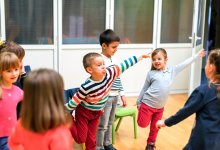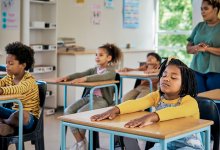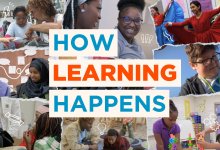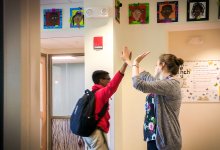Social & Emotional Learning (SEL)
Find resources to help students manage their emotions, resolve conflicts, and make responsible decisions—creating the healthiest school culture possible.
Using Digital Media to Promote Screen-Free Learning
Preschool teachers can share these resources with families as a catalyst for at-home learning experiences.156Your content has been saved!
Go to My Saved Content.How Accessible Tech Can Promote Empathy and Collaboration
A middle school design and technology teacher breaks down a three-project unit that nicely overlaps with STEAM content.Your content has been saved!
Go to My Saved Content.How to Address School Avoidance
To help reduce chronic absenteeism, schools can help students learn how to self-regulate and manage feelings of discomfort.Your content has been saved!
Go to My Saved Content.Using Theater Games to Build Students’ Working Memory
By holding onto the information necessary to play certain games, students develop skills that lead to academic success.Your content has been saved!
Go to My Saved Content.Teaching Young Learners Self-Calming Skills
To help early elementary students manage big emotions, try breathing exercises and sharing how you deal with overpowering feelings.Your content has been saved!
Go to My Saved Content.Why Ages 2-7 Matter So Much for Brain Development
Rich experiences—from play to the arts and relationships—fundamentally shape a young child’s development.124.3kYour content has been saved!
Go to My Saved Content.How Learning Happens
In this series, we explore how educators can guide all students, regardless of their developmental starting points, to become productive and engaged learners.108.7kYour content has been saved!
Go to My Saved Content.Making Students Feel Safe
A trauma-informed approach ensures that students feel safe, supported, and nurtured—to improve their chances of academic success.129.8kYour content has been saved!
Go to My Saved Content.Building Classroom Community Through Daily Dedications
When students share stories about those who have inspired and impacted them, the whole classroom feels more connected.56.1kYour content has been saved!
Go to My Saved Content.When Students Are Traumatized, Teachers Are Too
Trauma in students’ lives takes an emotional and physical toll on teachers as well. Experts weigh in on the best ways to cope.113.5kYour content has been saved!
Go to My Saved Content.Improv in the Classroom
A collection of our popular articles and videos about how theater games and improvisation can spark creativity, build relationships, and boost academics and executive function skills alike.5.7kYour content has been saved!
Go to My Saved Content.8 Proactive Classroom Management Tips
New teachers—and experienced ones too—can find ideas here on how to stop disruptive behavior before it begins.78.2kYour content has been saved!
Go to My Saved Content.3 Ways to Help Students Build Attention Stamina
These simple tools and strategies can improve focus in the classroom.A Daily Support System for Students
Students who need extra social and emotional support have a quick check-in with an adult at the start and end of each day.89.9kYour content has been saved!
Go to My Saved Content.How to Incorporate Student Feedback to Improve SEL
Meaningful input and active engagement from high school students can transform a school’s approach to social and emotional learning.169Your content has been saved!
Go to My Saved Content.











